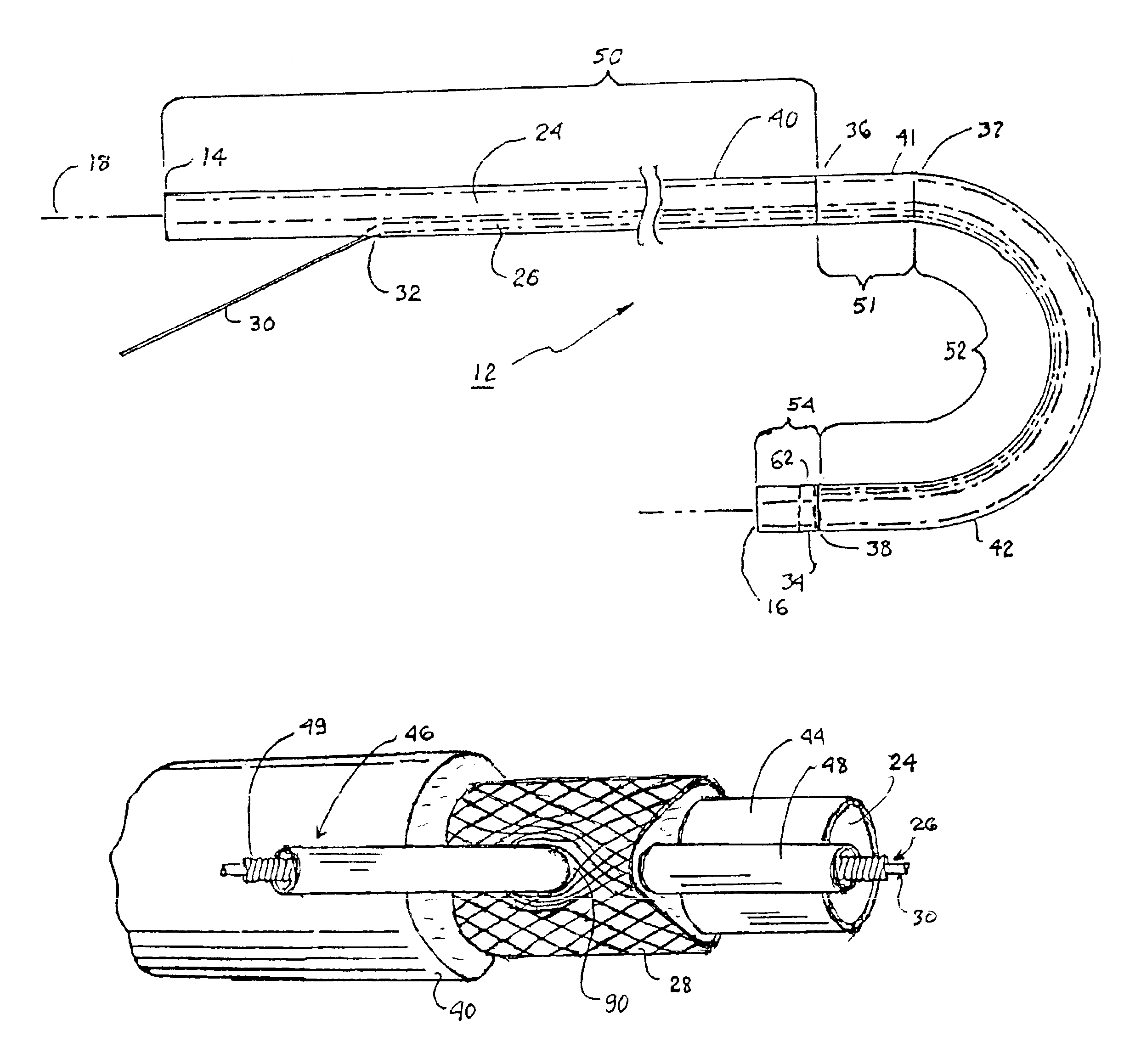Steerable catheter
a technology of a steerable catheter and a lumen body, which is applied in the direction of multi-lumen catheters, catheters, other medical devices, etc., can solve the problems of inability to use, inconvenient use, and inability to use,
- Summary
- Abstract
- Description
- Claims
- Application Information
AI Technical Summary
Benefits of technology
Problems solved by technology
Method used
Image
Examples
Embodiment Construction
[0044]The present invention may be implemented in a wide variety of elongated steerable catheters to facilitate advancement of the catheter body distal end through constricted and twisting access pathways, including the vascular system, of the human body and / or to alignment of a catheter body into conformance with an anatomical structure of interest.
[0045]The present invention can be implemented in catheters having at least two lumens or multiple lumens extending the length of the catheter body. For convenience, the illustrated preferred embodiments depict steerable catheters having at least one delivery lumen and a pull wire lumen that can receive a pull wire to induce bends and curves in at least an intermediate section of the catheter body.
[0046]Thus, the present invention is described in the context of a steerable catheter, and several embodiments are described herein by way of example. First, a multi-lumen catheter body 12 that may incorporate the concepts of this invention is ...
PUM
| Property | Measurement | Unit |
|---|---|---|
| Tensile strength | aaaaa | aaaaa |
Abstract
Description
Claims
Application Information
 Login to View More
Login to View More - R&D
- Intellectual Property
- Life Sciences
- Materials
- Tech Scout
- Unparalleled Data Quality
- Higher Quality Content
- 60% Fewer Hallucinations
Browse by: Latest US Patents, China's latest patents, Technical Efficacy Thesaurus, Application Domain, Technology Topic, Popular Technical Reports.
© 2025 PatSnap. All rights reserved.Legal|Privacy policy|Modern Slavery Act Transparency Statement|Sitemap|About US| Contact US: help@patsnap.com



